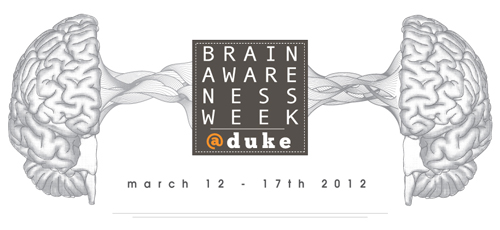By Prachiti Dalvi

Dr. Nicolelis was recently featured on the Daily Show with Jon Stewart to discuss his new book: Beyond Boundaries.
At the 2014 FIFA World Cup, Dr. Miguel Nicolelis hopes to see a quadriplegic child walk into the pitch and deliver the kickoff of the opening game. A pioneer in brain machine interface research and recent author of Beyond Boundaries, Nicolelis gave an evening talk on March 14 at the Nasher as a part of Brain Awareness Week. Dr. Nicolelis grew up in São Paulo and came to Duke in 1993. Since then, he has focused his research efforts on facilitating two-way dialogue between brains and machines.
Recent advancements in biomedical engineering allow us to use filaments implanted in several parts of the brain to obtain brain function readings: something that was impossible several decades ago. In one of Dr. Nicolelis’s first experiments, monkeys learned to use a joystick to catch a moving object on a screen. After the monkey was able to accurately catch the object 90% of the time, a brain-machine interface was turned on linking the robotic arm to the brain signals. The joystick was eliminated from the setup. The only way to obtain the reward (Brazilian orange juice) was to imagine catching the object.
The brain-machine interface allows for the translation of mental movements into digital commands while recording muscle activity. Using data collected from this experiment, on March 28, 2003, the Nicolelis team was able to design and operate the first robotic arm.

Until recently, neurons were considered the basic functional unit of the brain. More recently, scientists have focused their attention on populations of neurons as functional units instead.
Nicolelis and others are focusing on cell assembles as key functioning units of the brain, not simply neurons. “Populations of neurons across multiple brain structures are working together to make movement possible,” says Nicolelis. Thus, a holistic approach of looking at brain activation is necessary to understand and replicate movement in machines. Differences in the number of neurons activated have been observed when neurons are operating a robotic arm instead of a biological arm.
In a second set of studies, Nicolelis studied the effect of virtual simulations on the brain’s ability to assimilate other things as extensions of the human body. For example, if a professional tennis player is blindfolded and asked to point where his/her arm ends quickly after they have been playing tennis for an hour or so, they will point to the end of the racket as the end of the arm. In other words, the tennis player is assimilating the racket as an extension of the body. Similarly, if a monkey sees a knife approaching a rubber limb that is in the place where his arm should be, he will experience the anxiety, increase in heart rate, and even remove his real arm away from the perceived source of danger.
In an international collaboration with a team from Kyoto, Japan, researchers were able to send brain activity data of a monkey walking on a treadmill to a robot in Japan. The video of the robot walking was then transmitted back to the monkey. Even when the treadmill was stopped, and the monkey was rewarded for each step the robot took, the monkey began imagining that she was the one taking steps in order to be rewarded.
This brain-machine interface research has interesting implications in medicine, ranging from spinal lesions to Parkinson’s disease. When a spinal lesion forms, the brain continues to produce brainstorms to direct movement; however, the body does not have access to muscles. This is where the brain-machine interface comes into play: the brain can provide the directions that can be converted to digital commands, which can ultimately lead to functioning of the machine. To use the brain-machine interface to treat Parkinson’s, Dr. Nicolelis has been using a mouse model developed by Dr. Marc Caron in which 80% of the neurotransmitter dopamine is depleted. The rigid movements of Parkinson’s patients can be refined using brain-machine interface technology.
Dr. Nicolelis’s research implies that it is “possible to use brain activity beyond epithelial boundaries we have,” he says. Perhaps we will be able to do things using this technology, which we customarily cannot do because of the physical constraints of our body because there is no limit to what our minds are capable of doing. “There is a tremendous range of opportunities in this field.”
With the progress the Nicolelis lab is making, perhaps we will be able to see something truly unique at the 2014 FIFA World Cup in Brazil!















